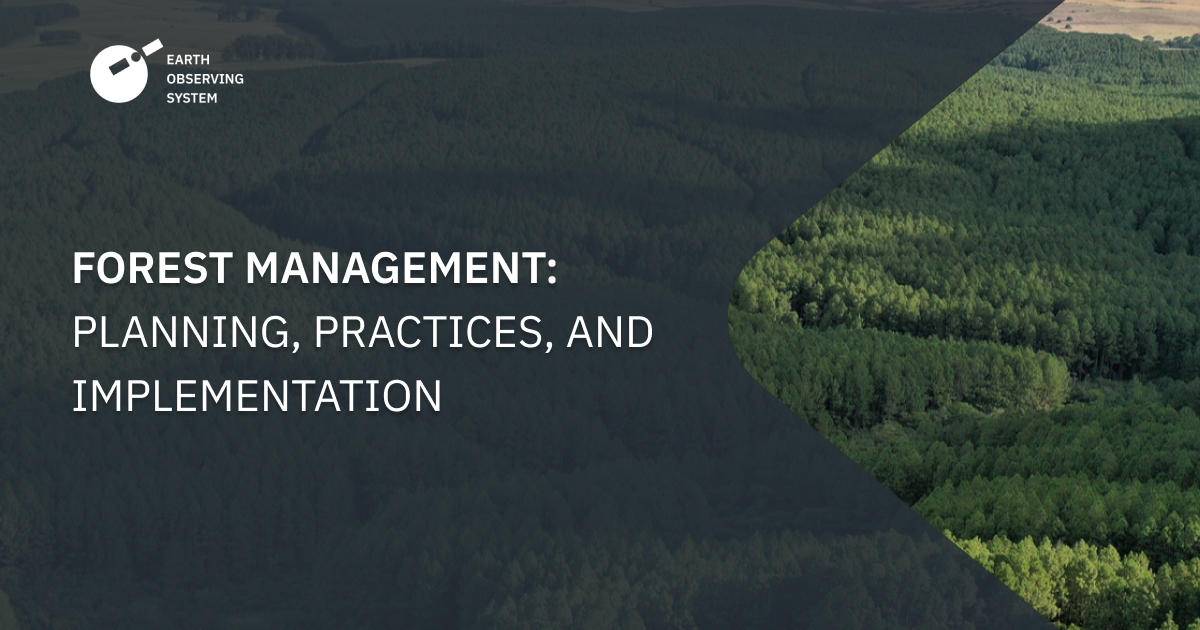
What Is Forest Management?
Imagine a world where forests thrive, supporting life, and providing valuable resources. That’s the goal of forest management – to achieve environmental, social, and economic objectives effectively. It involves ensuring the security of the forest and its inhabitants, preserving ecosystem health, and improving the production of wood goods and services.
Traditionally, national authorities have taken control of this process due to the administrative, financial, legal, and scientific decisions required. However, a global unified system isn’t advisable as different regions have unique socio-economic conditions. Thus, the responsibility falls on local governments and private enterprises to meet public needs while maintaining a healthy environment.
Forest Management Planning
Planning plays a crucial role in forest management. It allows landowners to determine their strategies for years to come. Forest management plans have various benefits, including making informed decisions, complying with legal obligations, and obtaining licensing and grant payments.
These plans can be detailed or general. Detailed plans focus on solving current problems, while general plans outline long-term decisions that shape woodland development over the years. The plan, presented as a working document, should define landowners’ goals, accompanied by specific schedules, activities, and maps displaying the boundaries and features of the woodland.
Forest Management Practices
Forest management plans encompass specific activities tailored to landowners’ goals. Let’s explore some of the main practices.
Timber Harvesting
Timber harvesting serves multiple purposes, including improving woodland and wildlife health, as well as industrial and economic uses like paper production and tourism. Different methods, such as clear-cutting, selective logging, shelterwood, and seed tree cutting, are employed based on specific forest management situations.
Timber Thinning
Under natural conditions, trees compete for vital resources, resulting in slow-growing trees struggling to survive. Timber thinning addresses this issue by selectively cutting down a certain percentage of trees. This practice allows the remaining plants to grow more actively and become stronger. Commercial timber thinning covers the cost, while pre-commercial thinning is more accessible but doesn’t provide financial coverage.
Prescribed Burning
Prescribed burning is essential for preventing fire hazards, promoting plant growth, and reducing disease and insect infestation. It should be performed following strict rules to prevent uncontrolled wildfires.
Reforestation
Woodlands are renewable resources, and reforestation ensures the endless cycle of growth, cutting down, and regrowth. Natural regeneration involves the germination of plants from naturally fallen seeds and stumps, while artificial reforestation allows landowners to control the types of trees grown and the spacing between seedlings.
Forest Succession
Woodland succession involves the natural or managed change of plant and animal communities. This practice benefits various animal species, such as rabbits and birds, by providing food and shelter.
Forest Management to Prevent Fires
Woodland fires pose a significant threat to ecosystems and properties. Effective forest management practices can greatly reduce the likelihood and impact of fires. Activities like maintaining tree health, controlled burning, and creating firebreaks help minimize the spread of fires. Thinning woodlands is particularly useful, as it provides more space for healthy plants and allows for faster recovery after a fire.
Forest Management with Satellite Technologies
Monitoring diseases, pests, and tree health is crucial for effective forest management. Satellite technologies offer accurate and real-time data, enabling landowners to analyze woodlands and implement sustainable practices. EOSDA Forest Monitoring software provides essential tools for forest management, including remote monitoring of deforestation, weather analysis, and detection of potential fire risks. This technology optimizes resource usage and facilitates prompt responses to mitigate damage caused by fires.
Sustainable Forest Management
Proper forest management is essential for the long-term sustainability of forests. Sustainable practices ensure the availability of resources while minimizing environmental damage. In the face of climate change and potential global food shortages, landowners, woodland managers, logging companies, and the food industry are transitioning to sustainable production methods, including sustainable forest management. Satellite technologies, such as EOSDA Forest Monitoring, play a vital role in facilitating this transition.
References
- Forest management plans. forestresearch.gov.uk.
- Guidelines for Commercial Thinning. Ministry of Forests: Forest Practices Branch. British Columbia.
- Wildfires Toolkit. earthdata.nasa.gov.
